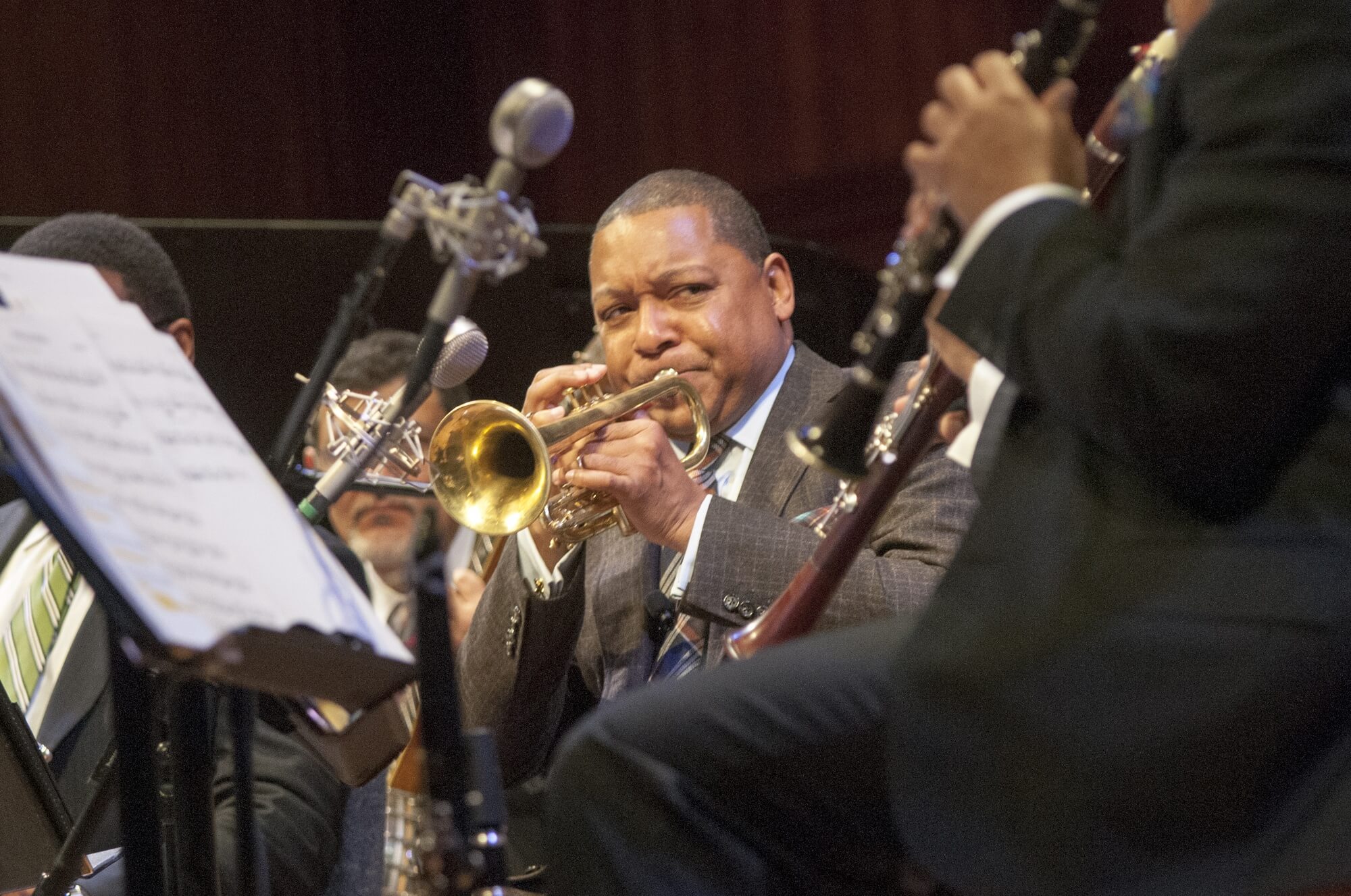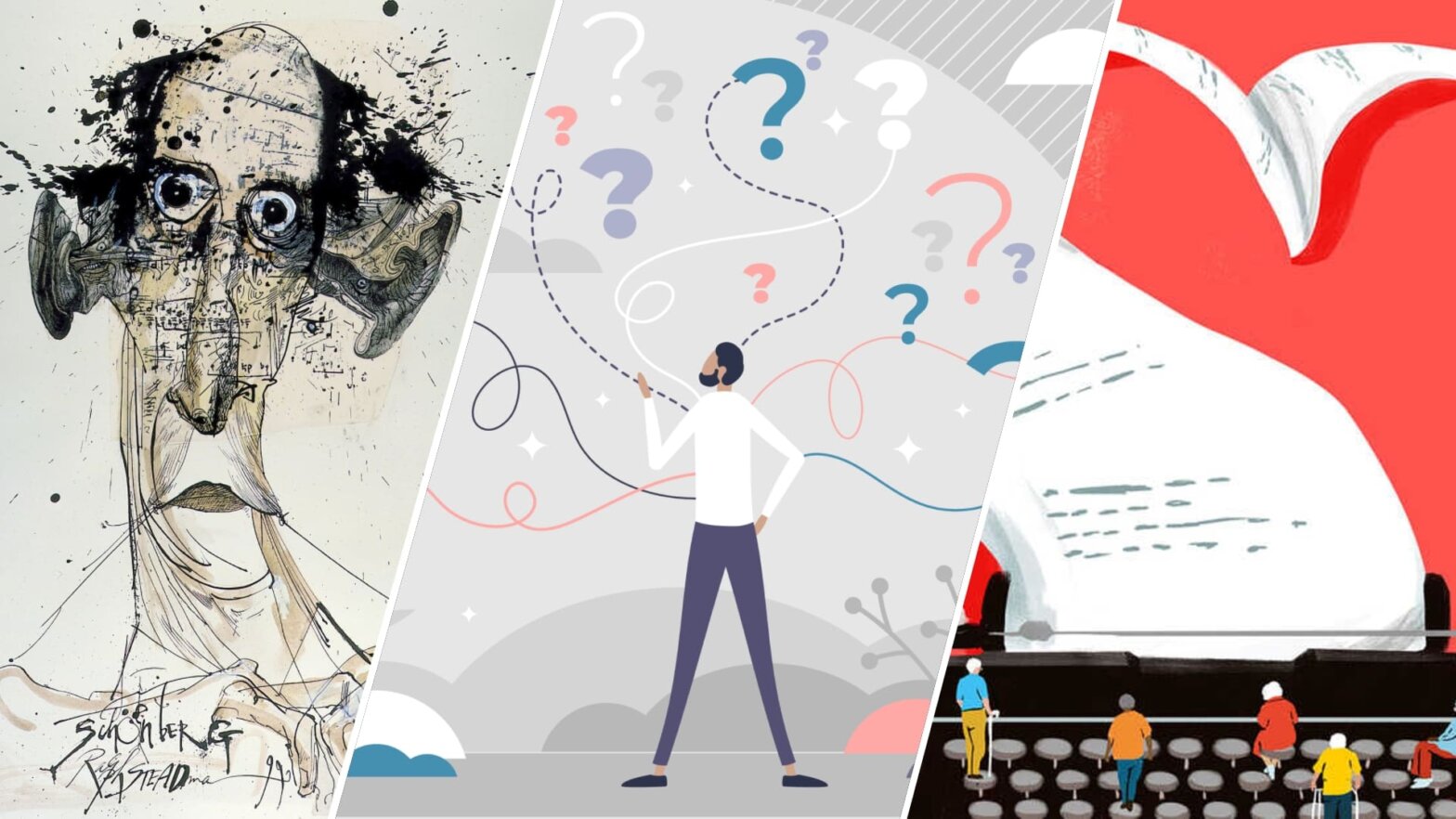Have you ever winced while listening to an amateur band hit the wrong notes? Have you ever felt discomfort when you’re tasked with a job that goes against your beliefs? Or have you ever stumbled over a poem’s lines that seem to just sound bad? Dissonance in its many forms is all around us. Often we think of it in a negative light, as something to avoid. But dissonance can be used in various artistic mediums to deliver a point, heighten emotion, or add texture. Let’s get to the bottom of “what is dissonance,” and how we can use it to our advantage.
Dissonance Meaning
First, let's define dissonance
To be able to use dissonance skillfully, you need to have a good grasp on what it is and how it’s obtained. Let’s define dissonance.
DISSONANCE DEFINITION
What is Dissonance?
Dissonance is the tension that results from the combination or clash of two incompatible elements. In other words, it is the opposite of harmony, which is the culmination of complementary factors and it can be found in a variety of fields and forms.
Types of Dissonance:
- Cognitive
- Musical
- Poetic
What is Dissonance?
Types of dissonance
As you can probably tell from the definition, there’s a multitude of manners and contexts in which dissonance can manifest. Let’s now parse through a few of its most common forms.
COGNITIVE DISSONANCE
Cognitive dissonance is a term used in psychology that refers to when an individual holds beliefs or attitudes that are in conflict with one another. On the surface, it might sound strange, but cognitive dissonance is extremely common.
To put cognitive dissonance in simple terms, it’s best to explain through examples. Cognitive dissonance examples can arise in most people’s relationship with unhealthy food. We all know candy isn’t good for us, and yet often we’ll find ourselves eating candy. Or, similarly, we all know lying is bad, but everyone tells a lie once in a while.
Cognitive dissonance can also happen on more profound levels, and the more important the conflicting beliefs are, the more stress and anxiety can arise. Cognitive dissonance examples abound in our day-to-day life.
MUSICAL DISSONANCE
Musical dissonance is probably the most straight-forward form: you know it when you hear it. So what is dissonance in music? Musical dissonance is when two or more notes are played at the same time and are disharmonious, or, in layman’s terms, sound unpleasant.
But dissonance in music isn’t necessarily a bad thing – musical artists use dissonance all the time to different effects.

Jazz trumpeter Wynton Marsalis is known for his use of dissonance • What is dissonance?
POETIC DISSONANCE
Can you find dissonance in a sentence? Poetic dissonance is similar to musical dissonance, in that it is also concerned with sound. Unlike musical dissonance, however, which focuses on the pitch of each note, poetic dissonance refers to the sound of each word.
The dissonance definition in poetry is the opposite of assonance, where words run together with similar consonants and vowel sounds. Dissonant phrasing in poetry is a cacophony of different vowel and consonant structures, which come off to a reader as harsh or unpleasant.
What is Dissonance in Action
Using Dissonance
You might be wondering why anyone would purposefully use dissonance if it causes discomfort. But discomfort in art is often desired or necessary – it can help add diversity in tone to a poem, or complexity to a song. Let’s run through a few different reasons why you might want to employ dissonance in one of its many forms in your piece.
BUILD SUSPENSE
Using musical or poetic dissonance can help heighten the suspense in a story or scene. Soundtrack dissonance will put a viewer on edge, and they’ll be waiting for some sort of resolve. Try listening to one of your horror movie’s scores – odds are they employ a lot of musical dissonance to make you feel uneasy.
Another sound technique to use to build suspense is the shepard tone, which uses octave notes to create the illusion of ascending or descending sound. It’s not exactly dissonant, but it achieves a similar uneasy effect.
Poetic dissonance in writing or dialogue can have the same effect as a dissonant score – if your character is spewing off a monologue filled with contradicting vowel sounds and harsh consonants, your audience will be anticipating ugliness in the emotion of the scene that matches the ugliness of their dialogue.
ADD TEXTURE
A harmonious song or assonant piece of writing can be a delight to listen to or read. But the longer a passage is, the less powerful the harmony or smoothness will be if it’s without counterpoint. To return to a previous metaphor, harmony is like candy: a little is great; a lot can make you sick.
By adding dissonant moments, you create texture in your piece that will keep your audience engaged and interested. Alternating between dissonance and harmony is a great way to guide audiences through a variety of emotions and themes.
COMPLICATE CHARACTERS
So far, we’ve focused primarily on the uses of poetic and musical dissonance. Don’t be fooled– there are plenty of cognitive dissonance examples in art as well.
A good character is a complicated one. Characters who fall into tropes or stereotypes often feel reductive or just plain boring. What better way to add depth to your character than to give them cognitive dissonance? Seeing your character struggle with contradicting beliefs is compelling and makes for great drama or, if played right, comedy.
In a sense, cognitive dissonance is another word for internal conflict. A character who needs to resolve the conflicting ideas inside themself is a character who is real: we all contain cognitive dissonance.
Related Posts
What is Dissonance?
Dissonance Examples
So far we’ve done a lot of theorizing about the dissonance definition; let’s get into some real-world dissonance examples in art.
MOONLIGHT
Cognitive dissonance examples in Moonlight (2016)
Moonlight provides one of the best examples of cognitive dissonance in a character. Throughout the film, the protagonist, Chiron, struggles with his sexuality and what he believes a man should be. These two things are incompatible: he’s gay and he’s grown up to have a heteronormative image of masculinity in his head.
The result is a profound level of cognitive dissonance, which comes to the fore in the powerful final scene of the film. Chiron has built himself up to be “hard” in the image of how he thinks men should behave, but around Kevin, his childhood love, he’s unable to keep the charade going.
The use of cognitive dissonance in the film results in one of the most moving character studies in recent history, one that is heartbreaking and real.
THE SHINING
The iconic “Here’s Johnny” scene from The Shining (1980)
The Shining is a horror classic for many reasons, and one of the less-discussed of these is its score. Viewers can get so wrapped up in Jack Nicholson’s performance or Stanley Kubrick’s masterful direction that they can forget about Wendy Carlos’ incredible score. But the music behind The Shining is just as important as its shiny counterparts, and its soundtrack dissonance is a great example of this.
As an exercise, watch the above clip on silent, and then rewatch it with sound. The extremely dissonant, clattering score will put you on the edge of your seat, while expertly underscoring Jack Torrance’s total fall into insanity. A more melodic score would do neither of these things.
It might not be nice to listen to, but it’s necessary. What is dissonance in music? Look no further than The Shining.
MACBETH
Poetic dissonance defined in Macbeth
Looking for poetic dissonance examples being used to further plot? Look no further than Shakespeare. In Macbeth, Shakespeare employs poetic dissonance to convey Macbeth’s stress and desperation:
“Of all men else I have avoided thee.
But get thee back. My soul is too much charged
With blood of thine already.”
The consonants and vowels of Macbeth’s lines clash and sound unpleasant to the ear. In the above clip, this blank verse and poetic dissonance aid Christopher Eccleston’s already desperate performance.
Shakespeare’s use of dissonance is a testament to the proven power of the device in storytelling– dissonance has been used as long as we’ve been putting pen to paper.
Up Next
Different Types of Poems
Dissonance in literature, dissonance poetry, music, thought– we’ve covered it all. Continue learning about literary devices with our list of various poem structures. Much like dissonance, these structures can be used for much more than just one artform, and understanding them will unlock a new level of appreciation for huge swaths of stories.
Up Next: Poem Structures →
Showcase your vision with elegant shot lists and storyboards.
Create robust and customizable shot lists. Upload images to make storyboards and slideshows.
